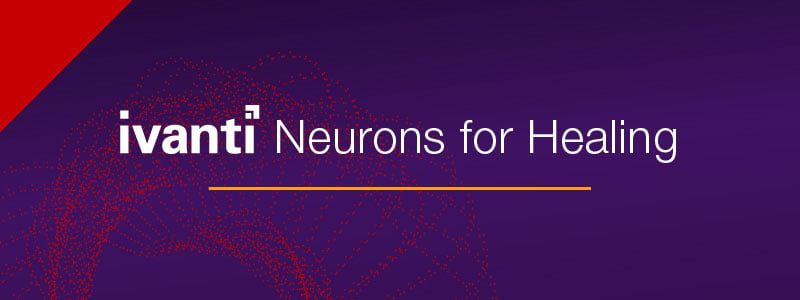Ivanti Neurons for Healing: Shift All the Way Left to Self-Healing
 If you are an IT professional, you are technical. You love technology. You love to dabble. You enjoy the thrill that comes from troubleshooting problems and finding a solution. But you probably don’t want to troubleshoot and fix problems all day. There are other interesting things to do. IT can be strategic in helping companies improve their top and bottom line.
If you are an IT professional, you are technical. You love technology. You love to dabble. You enjoy the thrill that comes from troubleshooting problems and finding a solution. But you probably don’t want to troubleshoot and fix problems all day. There are other interesting things to do. IT can be strategic in helping companies improve their top and bottom line.
The complexity of IT continues to increase. The good news is that the need for talented IT staff also continues to grow. The bad news is that if you are still struggling to keep up with fixing problems, you won’t have time to focus on the strategic projects that can help transform your business.
Wouldn’t it be wonderful if problems fixed themselves? Is that possible? This is the goal of the Ivanti Neurons for Healing. Let’s talk about how we get there.
Shift Left Strategy
You have likely heard of the “shift left” strategy. The core idea behind shift left is to move problem resolution or other activities as close to the end user as possible. A shift left solution automates problem resolution and gets that automation in the hands of the frontline support analyst. An even better idea is to make the automated solution directly available to the end user so they can fix the problem themselves. In each case, we shifted the resolution closer to the initial problem, or we shifted left.
The Ultimate Goal: Self-Healing with Ivanti Neurons for Healing
Shift left is a strategy that leads toward hyper-automation and the ultimate goal of having devices autonomously manage themselves. Like the human body can heal after an injury, wouldn’t it be nice to have devices self-heal when a problem occurs? This would reduce or eliminate many IT tasks and provide a better end user experience.
As an example, let’s imagine a device that is running low on hard disk space. The end user is now at risk of not being able to run some programs, and the device may fail to get software updates or important patches. A self-healing device would detect the dilemma and automatically run steps to clear up more disk space, preventing the user from being frustrated and preventing failed software update and patch tasks from IT. As remote workers become the new normal, it becomes even more important to increase automated resolution on your way to the self-healing goal.
Steps to Get There
Getting to a self-healing environment doesn’t occur overnight. Ivanti Neurons for Healing provides these steps:
- Discover: The first step is to understand what you have in your environment. This includes endpoints with their associated software and peripherals and also includes infrastructure devices and services available to users.
- Optimize: The second step is to identify the optimal configuration and performance settings that ensure a good, secure end user experience. Even more ideal is to personalize the experience for the end user to make their workspace familiar and productive.
- Automate: Once you have identified the optimal settings to keep a device and user workspace secure and productive, you will then automate detecting if the device drifts from that optimal state and return it back, keeping the workspace secure and productive.
Join Us on the Journey
You will need a solution that will guide you through these three steps and assist you on your journey to self-healing. We invite you to join us on this journey. Start by reading and watching information regarding Ivanti Neurons for Healing, and continue by checking back regularly as we expand the capabilities of Ivanti Neurons.

